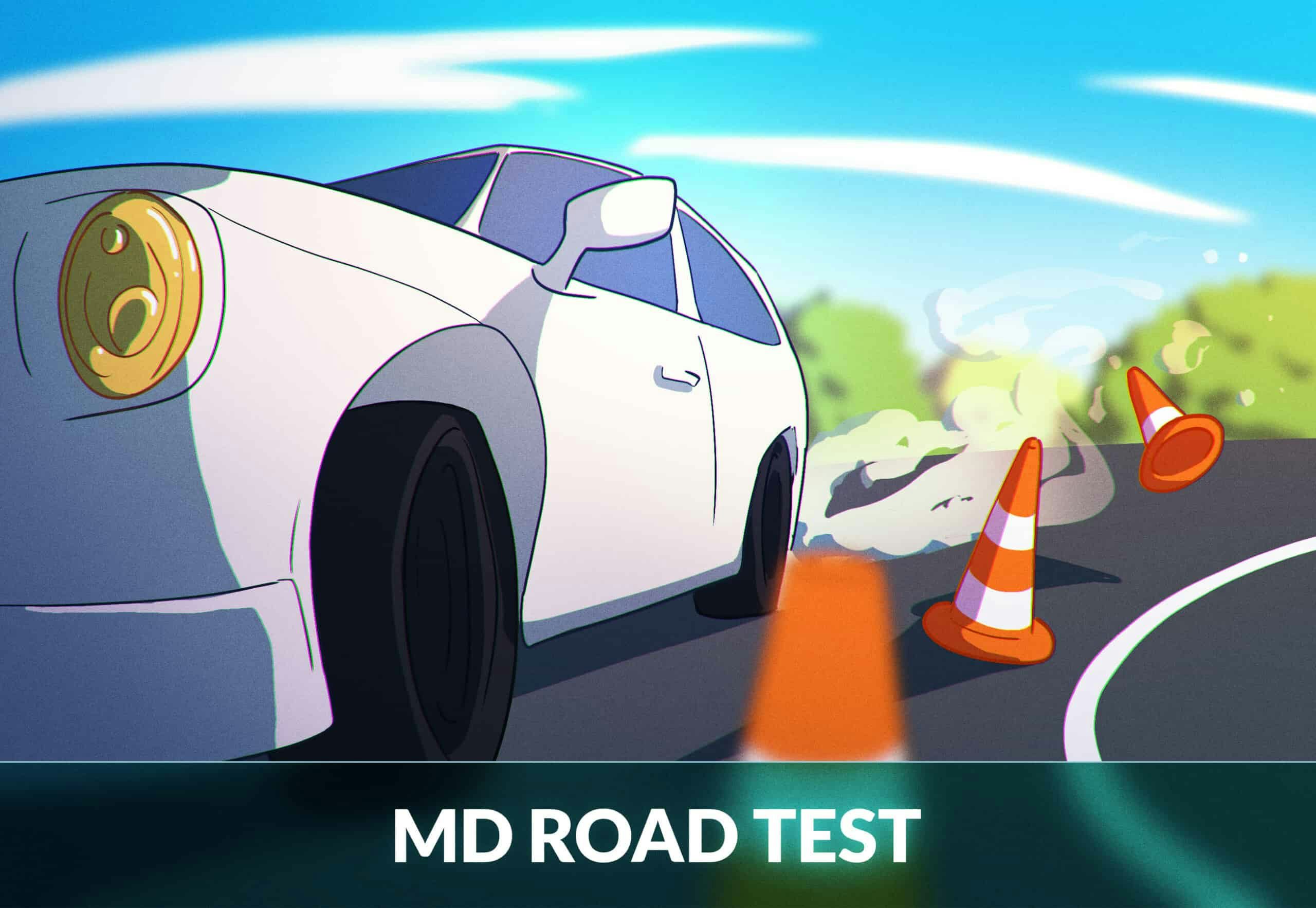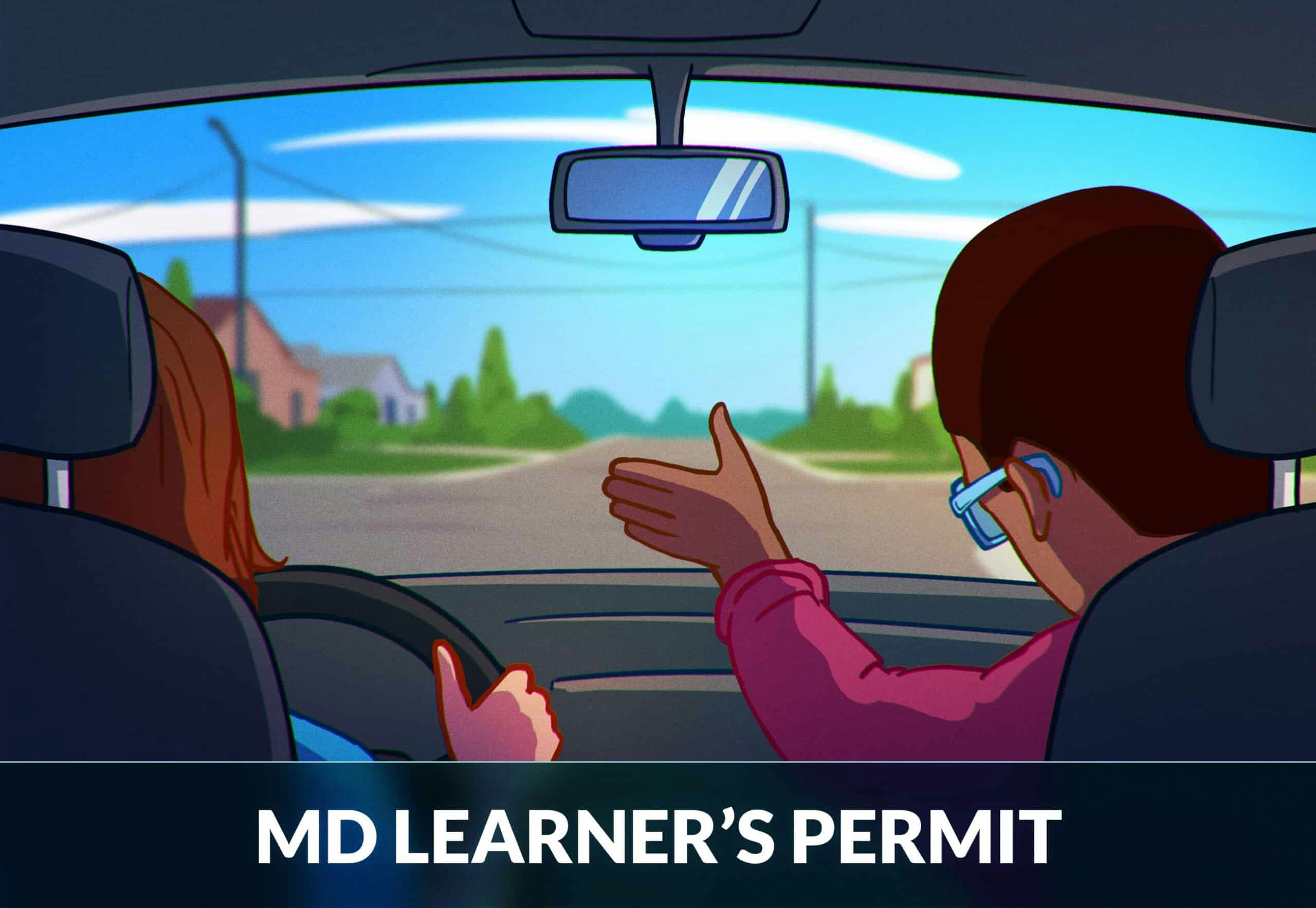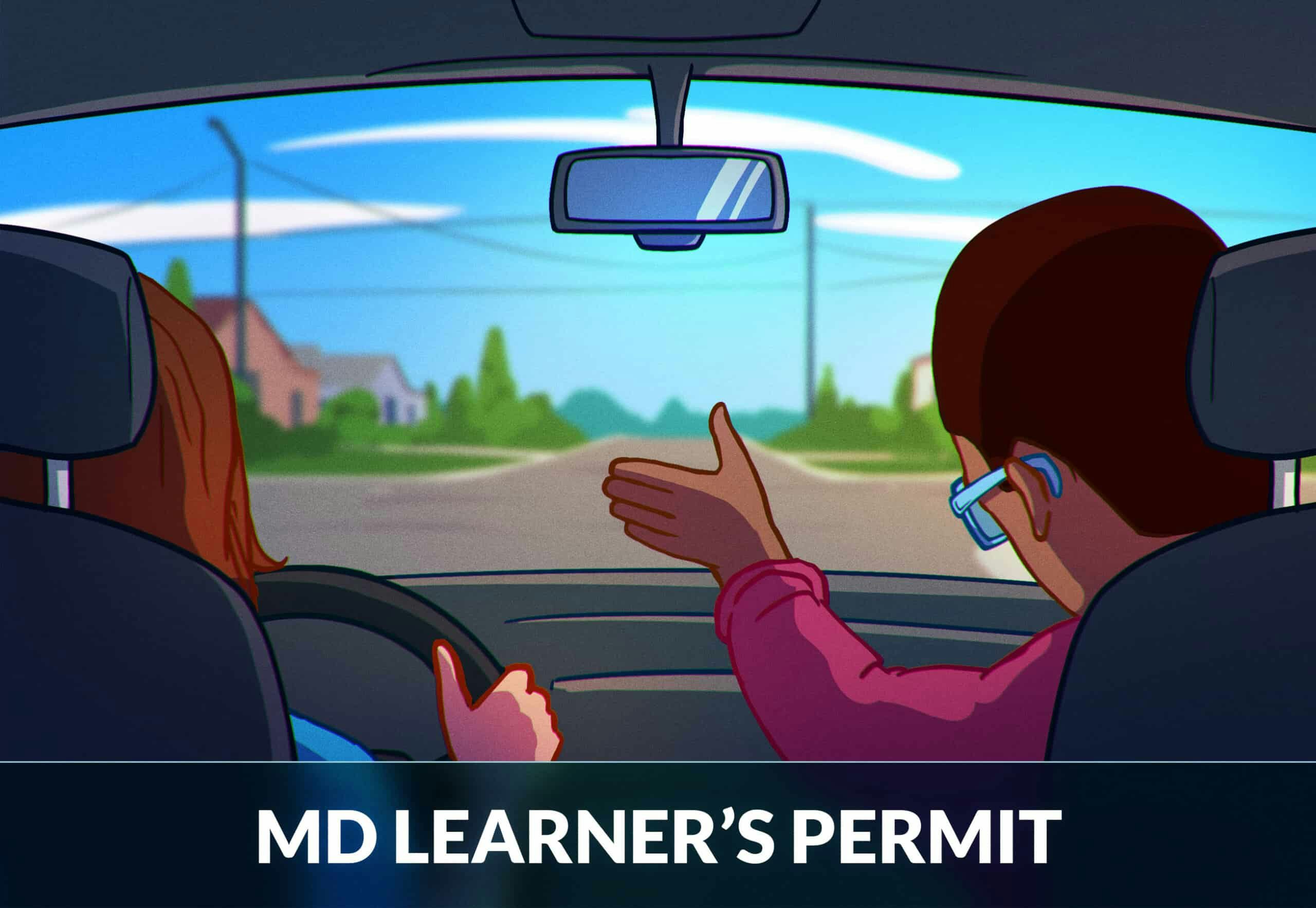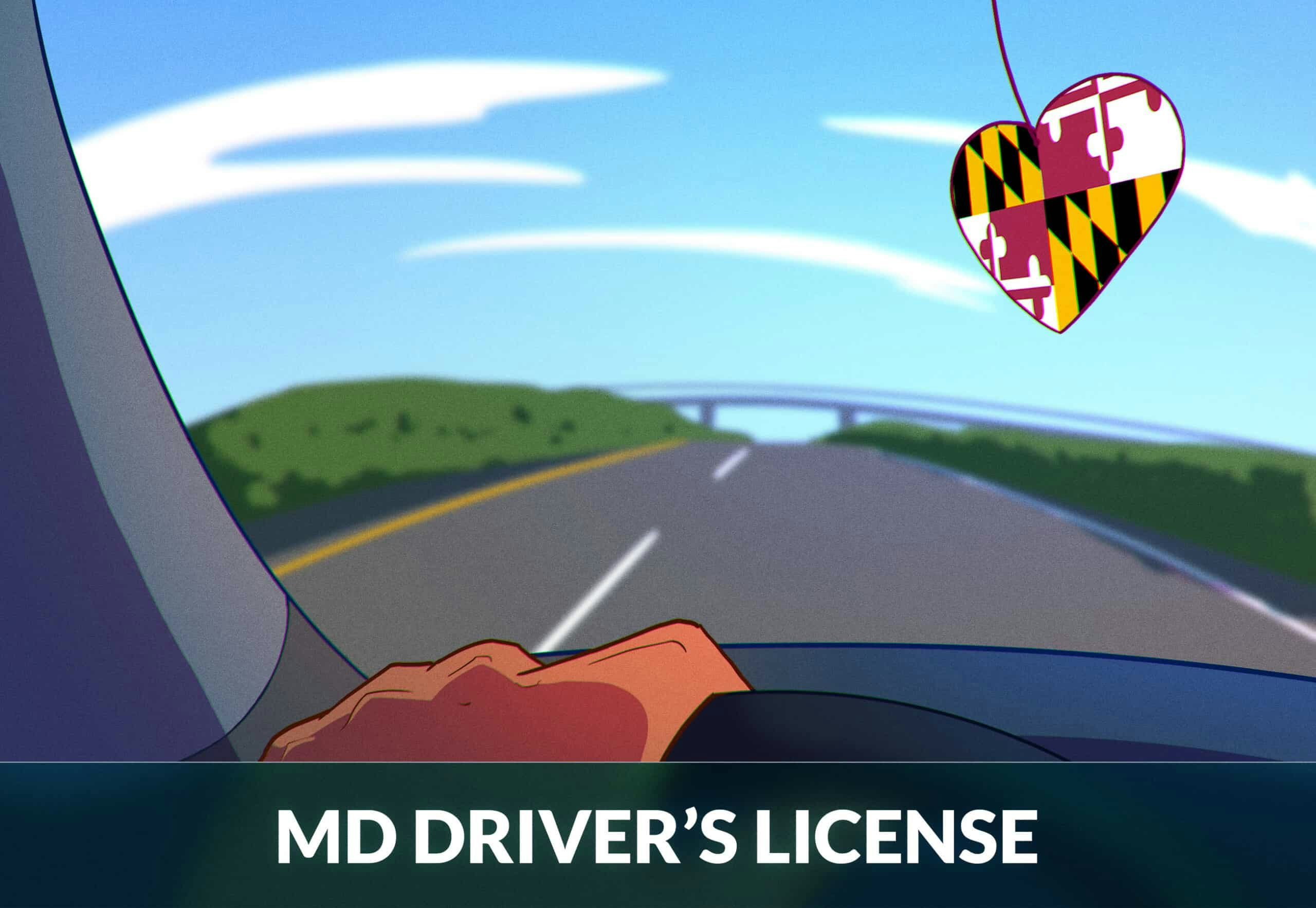
Passing the Maryland Road Test: A Complete Guide
The Maryland road test, also known as the driving skills test, is a common reason for anxiety for young drivers. Maybe you’re not sure what driving maneuvers you’ll be expected to perform, or maybe you don’t know what documents you should bring to the Motor Vehicle Administration office, or you’re worried that your vehicle doesn’t meet state testing standards. However, with the proper preparation, you can turn the stressful day of your road test into an exciting adventure.
Once you pass your road test, you can get your driver’s license. If you’re under 18, you’ll get a provisional license. A provisional license allows you to drive alone, but you’ll still have to follow certain restrictions.
Below, you’ll find all the information you’ll need to thoroughly prepare for your road test in Maryland so that you can pass it with confidence.
Requirements for the Maryland Road Test
Before you start the process, you’ll want to make sure that you are eligible to take the road test. Maryland requires all new drivers to complete their graduated driver’s licensing program, called the Rookie Driver. You’ll take your road test when you’re transitioning from the learner’s permit stage to the provisional license stage.
Read through this list to make sure that you completed most of the following requirements:
- After reaching a minimum age of 15 and nine months, you have scheduled an appointment at the MVA.
- You’ve studied the Maryland Driver’s Manual tips to prepare for your knowledge test.
- You have brought the proper documents to the MVA on the day of your appointment.
- You have taken and passed the knowledge and vision screening tests. You’ve paid the proper fees.
- You’ve successfully obtained your learner’s permit.
- If you’re under the age of 25, you’ve practiced driving under adult supervision for at least 60 hours, 10 of which are nighttime driving hours. If you’re over the age of 25, you only need 14 practice hours, with three nighttime hours.
- Your supervising adult has filled out your practice skills log.
- You’ve held your learner’s permit for the correct amount of time: if you’re under 18, you must hold it for nine months; if you’re between the ages of 18 and 24, you must hold it for three months; if you’re age 25 or over, you must hold it for 45 days.
- You’ve maintained a clean driving record for at least nine months.
- You’ve successfully completed an approved driver’s education program, which consists of 30 classroom instruction hours and six hours of behind-the-wheel.
- You’ve reached the minimum age for obtaining a provisional license, which is 16 years and six months.
If this describes you, go ahead and schedule your road test appointment at any full-service MVA driver licensing office.
On the Day of Your Maryland Road Test
When the big day arrives, be sure you’re prepared by bringing the necessary documents and ensuring your vehicle is in good working order.
What Should You Bring to MVA?
When you head to the Maryland MVA to take your road test, remember to bring:
- Your valid learner’s permit
- Completed practice skills log
- Completed certification page
- Current proof of insurance for your vehicle
- Valid registration card for your vehicle
Proof that you’ve completed driver’s ed will be submitted electronically by your driving school. A licensed adult is required to accompany you to the testing location, and this adult must bring their valid driver’s license.
Vehicle Requirements
In Maryland, you will need to provide your own vehicle for the road test, and it will be inspected before you can start the test. If it doesn’t meet state standards, you will be prevented from taking your test. As mentioned above, you’ll need to have proof of valid registration and insurance. Additionally, you should make sure that your vehicle is functioning safely by checking out the following list:
- Windshield should offer an unobstructed view and shouldn’t be cracked.
- Both driver and passenger doors should open and close.
- Safety belts should be secure and should fasten properly.
- Tires should be properly inflated and should have adequate tread. Additionally, no lug nuts should be missing.
- Lights should all work, including headlights, brake lights, turn signals, and hazard lights.
- Gas tank should be at least half full and the gas cap cannot be missing.
- Rearview mirror and the outside left mirror should be secure.
- Front seats should be clean and secure.
- Glove box should be closed and shouldn’t contain any loose articles that could be hazardous.
- Exhaust system should work properly.
- No dashboard warning lights should be activated.
- There should be no fluid leaks.
- Car horn should work.
- Speedometer should be accurate and operational.
- Depending on weather conditions, windshield wipers and washers should work, and there should be enough washer fluid.
What’s Tested on the Maryland Road Test?
The Maryland driving test consists of two parts: a closed course section and a public road section. The closed course part of the test will occur first. During it, you’ll be asked to perform maneuvers such as the reverse two-point turnabout, which involves backing into a marked area similar to a driveway or alley.
Once you pass the closed course section, you’ll go on to the public road part of the test. This will take place on a predetermined testing route over public roads. Your performance will be evaluated based on your general driving abilities.
We’ve compiled a list of road test tips that you should read before taking your actual test.
- Brake smoothly and make complete stops at red lights and stop signs. Be sure to stop before the stop line if there is one.
- Keep both hands on the steering wheel.
- Pay attention to traffic signs and signals and obey them.
- Stay in your lane and don’t bump into curbs or sidewalks.
- Check your blind spots before changing lanes or merging, and stay aware of your surroundings by using your mirrors.
- Use the correct gear when driving.
- When turning, activate the correct turn signal at the proper moment. Be sure to slow down sufficiently, and then make a smooth turn while using both hands to turn the steering wheel. Turn from the correct lane and be sure that your turn signal is off when the turn is completed.
- When changing lanes, check your mirrors and blind spots before activating your turn signal and smoothly changing lanes. Remember to cancel your turn signal when the lane change is complete.
- When approaching an intersection, check traffic and stop if necessary. Don’t change lanes while driving through an intersection.
What Errors Can Make You Fail Your Road Test?
If you make too many minor errors on your road test, it will be terminated. Additionally, a number of major mistakes will cause you to automatically fail your road test. If you make one of these mistakes, your test will immediately end, and you may be asked to pull over. Your examiner will drive your vehicle back to the MVA office.
The following errors are some of the most common ways students fail their road test in Maryland:
- Not wearing glasses/contacts if you need them.
- Failing to properly wear your seat belt.
- Taking too long to complete a closed course maneuver.
- Bumping a boundary marker while completing a closed course maneuver.
- Failing to make a complete stop at a stop sign.
- Disobeying signs, signals, or any traffic laws.
- Being involved in an avoidable accident.
- Bumping into other vehicles or pedestrians.
- Driving dangerously.
- Forcing another driver to take action in order to prevent a crash.
- Bumping into a sidewalk or curb.
- Failing to follow your examiner’s instructions.
- Not keeping both hands on the steering wheel.
- Forcing your examiner to intervene to prevent an accident.
That’s It!
That’s everything you need to know about passing the Maryland driving skills test. We hope this guide has helped you out, and that you now feel comfortable with the steps moving forward. If you need any help studying for your upcoming exams, then Zutobi is the perfect study guide with online practice tests, a summarized handbook, and practical driving tips that will help you immensely during the actual road exam.

Avoid beginner mistakes with expert advice
Build road test confidence and reduce anxiety
Make at-home lessons a success with our parent guide
Recommended articles
Country
Ace your DMV test, guaranteed


